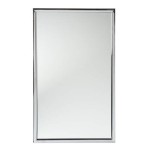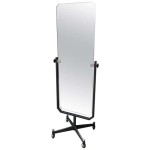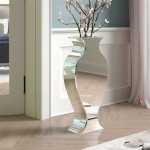Can You Screen Mirror iPad to Macbook?
Mirroring an iPad's screen to a MacBook offers several advantages for various tasks, from presentations and demonstrations to content creation and entertainment. This functionality allows users to display the iPad's screen content in real-time on a larger display, enhancing visibility and collaboration. This article explores different methods for achieving this screen mirroring, outlining their features, functionalities, and potential use cases.
Key Methods for iPad to Macbook Screen Mirroring
Several methods facilitate screen mirroring from an iPad to a MacBook. Choosing the optimal method depends on the specific needs and available software/hardware. The most common methods include:
Using AirPlay with a Compatible Mac
AirPlay, Apple's proprietary wireless streaming technology, allows seamless screen mirroring between compatible devices. For this method to work, both the iPad and the MacBook must be on the same Wi-Fi network and have AirPlay enabled. Newer Mac models generally support receiving AirPlay streams directly.
Steps for AirPlay Mirroring
1. Ensure both the iPad and MacBook are connected to the same Wi-Fi network. 2. On the iPad, open Control Center. 3. Tap the "Screen Mirroring" button. 4. Select your MacBook from the list of available AirPlay devices. 5. The iPad's screen content should now be mirrored on the MacBook's display.
Benefits of AirPlay Mirroring
AirPlay provides a convenient and wireless solution for screen mirroring. Its ease of use makes it ideal for quick presentations and sharing content. Some notable benefits of using AirPlay includes its high-quality video and audio streaming capabilities, its minimal lag in ideal network conditions, and its wide compatibility with Apple devices.
Using QuickTime Player
QuickTime Player, a pre-installed application on macOS, offers a wired screen mirroring option. This method involves connecting the iPad to the MacBook using a USB cable. This approach is particularly beneficial for situations where a stable connection is crucial, such as recording tutorials or demonstrations.
Steps for Mirroring with QuickTime Player
1. Connect the iPad to the MacBook using a compatible USB cable. 2. Open QuickTime Player on the MacBook. 3. Go to File > New Movie Recording. 4. Click the dropdown arrow next to the record button. 5. Select the iPad as the camera and microphone input. 6. The iPad’s screen will appear in the QuickTime Player window.
Advantages of Using QuickTime Player
QuickTime Player offers a reliable wired connection that eliminates potential Wi-Fi interference. Furthermore, it provides the option to record the mirrored screen content, a feature beneficial for content creators and educators. Another advantage is its consistent performance regardless of network conditions as it relies on a direct USB connection.
Third-Party Applications for Mirroring
Several third-party applications offer additional features for screen mirroring and may provide solutions for older Macs that don't natively support AirPlay receiving. These applications might offer features like screen recording, annotation tools, and enhanced performance optimizations.
Considerations When Choosing a Third-Party Application
When selecting a third-party application, factors such as cost, compatibility with specific iPadOS and macOS versions, features offered, and user reviews should be considered. Ensure the chosen application aligns with the intended usage and offers the necessary functionalities. Always verify legitimacy and security before installing third-party software.
Troubleshooting Common Issues
Occasionally, users might encounter issues while attempting to mirror their iPad screen to a MacBook. Common problems include connection difficulties, audio sync problems, and performance lag. Addressing these issues typically involves verifying network connectivity, updating software on both devices, and restarting both the iPad and MacBook. Connectivity issues are often resolved by ensuring both devices are on the same network and that AirPlay is enabled. Lag or performance issues may also be alleviated by closing unnecessary applications on both devices to free up system resources.
Optimizing the Mirroring Experience
Several steps can optimize the screen mirroring experience. These include ensuring both devices are running the latest software updates, closing unnecessary applications to free up system resources, and positioning the devices in close proximity for optimal wireless performance when using AirPlay. Using a wired connection with QuickTime Player can further enhance stability and reduce latency. Maintaining a clear line of sight between the devices can also improve performance when relying on wireless connections.
Choosing the Right Mirroring Method
Selecting the most effective screen mirroring approach depends on several factors. These include the specific task at hand, the age and model of the MacBook, network conditions, and the desired functionality. For quick, informal presentations and sharing, AirPlay often proves sufficient. However, for tasks requiring higher stability, recording capabilities, or compatibility with older Macs, QuickTime Player or a suitable third-party application might be more suitable. Evaluating individual needs and the characteristics of each mirroring method will facilitate an informed decision.

Best And Easy Ways To Mirror Mac Ipad

How To Share Ipad Screen On Mac Via Usb Or Wifi

3 Ways To Share An Ipad Screen On A Mac 2024 Movavi

Use Ipad As A Second Display Apple Support

How To Use Sidecar With Your Mac And Ipad

How To Mirror Ipad Mac Full Guide

How To Screen Mirror Ipad Mac With Ipados 15

How To Mirror Iphone Display Macbook Ios 12 Macos Mojave

How To Airplay From Iphone Or Ipad Mac 9to5mac

Use Ipad As A Second Display For Your Mac Apple Support In








